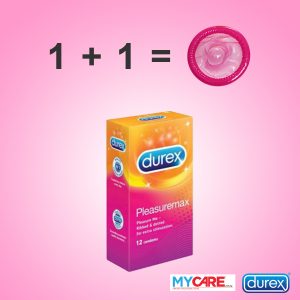
Fooling Around? Think Before You Do It | MyCare.com.my
Abandoned children are the most helpless and most frequent victims of violence, disease, malnutrition, and death. Without the support from their families, these children are exposed to the frightening dangers of abduction and sexual exploitation.
Shockingly, there are over 20 million homeless or abandoned children in the world today – a majority of them are orphans.
To decrease abandoned children, please make safety precaution by using condoms. When used the condom correctly and consistently prevent pregnancy about 98 percent of the time. The typical effectiveness rate where mistakes are made or condoms break is about 82 percent.
The risk of STD and HIV
Consistent and correct use of the male latex condom reduces the risk of sexually transmitted disease (STD) and human immunodeficiency virus (HIV) transmission. However, condom use cannot provide absolute protection against any STD. The most reliable ways to avoid transmission of STDs are to abstain from sexual activity or to be in a long-term mutually monogamous relationship with an uninfected partner. However, many infected persons may be unaware of their infection because STDs often are asymptomatic and unrecognized. Condom effectiveness for STD and HIV prevention has been demonstrated by both laboratory and epidemiologic studies. Evidence of condom effectiveness is also based on theoretical and empirical data regarding the transmission of different STDs, the physical properties of condoms, and the anatomic coverage or protection provided by condoms. Laboratory studies have shown that latex condoms provide an effective barrier against even the smallest STD pathogens. Epidemiologic studies that compare rates of HIV infection between condom users and nonusers who have HIV-infected sex partners demonstrate that consistent condom use is highly effective in preventing transmission of HIV. Similarly, epidemiologic studies have shown that condom use reduces the risk of many other STDs. However, the exact magnitude of protection has been difficult to quantify because of numerous methodological challenges inherent in studying private behaviors that cannot be directly observed or measured. The theoretical and empirical basis for protection: Condoms can be expected to provide different levels of protection for various STDs, depending on differences in how the diseases or infections are transmitted. Male condoms may not cover all infected areas or areas that could become infected. Thus, they are likely to provide greater protection against STDs that are transmitted only by genital fluids (STDs such as gonorrhea, chlamydia, trichomoniasis, and HIV infection) than against infections that are transmitted primarily by skin-to-skin contact, which may or may not infect areas covered by a condom (STDs such as genital herpes, human papillomavirus [HPV] infection, syphilis, and chancroid). STDs, including HIV
HIV Infection
Consistent and correct use of latex condoms is highly effective in preventing sexual transmission of HIV, the virus that causes AIDS. Other STDs and Associated Conditions Consistent and correct use of latex condoms reduces the risk for many STDs that are transmitted by genital fluids (STDs such as chlamydia, gonorrhea, and trichomoniasis). Consistent and correct use of latex condoms reduces the risk for genital ulcer diseases, such as genital herpes, syphilis, and chancroid, only when the infected area or site of potential exposure is protected. Consistent and correct use of latex condoms may reduce the risk for genital human papillomavirus (HPV) infection and HPV-associated diseases (e.g., genital warts and cervical cancer). Consistent and Correct Condom Use To achieve maximum protection by using condoms, they must be used consistently and correctly. The failure of condoms to protect against STD/HIV transmission usually results from inconsistent or incorrect use, rather than product failure. Inconsistent or non-use can lead to STD acquisition because transmission can occur with a single sex act with an infected partner.
How to Use a Condom Consistently and Correctly
Use a new condom for every act of vaginal, anal and oral sex throughout the entire sex act (from start to finish). Before any genital contact put the condom on the tip of the erect penis with the rolled side out. If the condom does not have a reservoir tip, pinch the tip enough to leave a half-inch space for semen to collect. Holding the tip, unroll the condom all the way to the base of the erect penis.


شركة مكافحة حشرات بتبوك
شركة مكافحة النمل الابيض بتبوك
ارقام شركات تنظيف الموكيت بالدمام
ارقام شركات تنظيف السجاد بالدمام